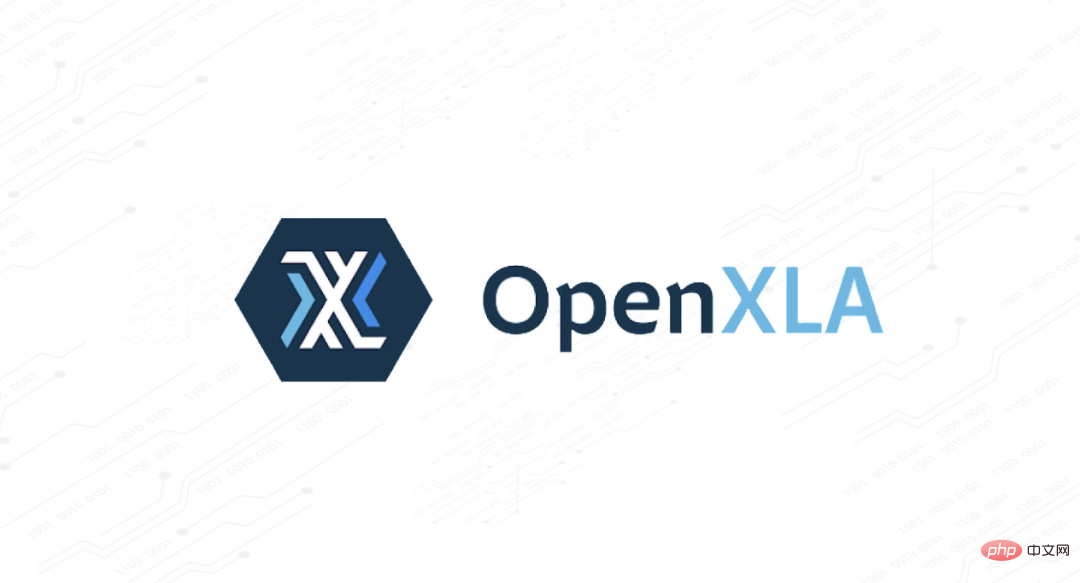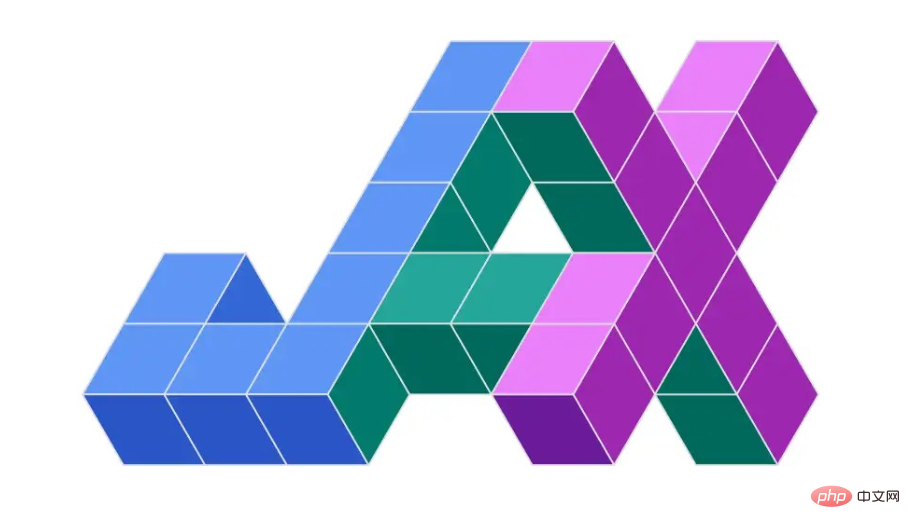 Technology peripherals
Technology peripherals
 AI
AI
 Google has not given up on TensorFlow and will release a new version in 2023, clarifying the four pillars
Google has not given up on TensorFlow and will release a new version in 2023, clarifying the four pillars
Google has not given up on TensorFlow and will release a new version in 2023, clarifying the four pillars
In 2015, Google Brain opened a research project called "TensorFlow". This product quickly became popular and became the mainstream deep learning framework in the artificial intelligence industry, shaping the modern machine learning ecosystem. Since then, thousands of open source contributors and numerous developers, community organizers, researchers, and educators alike have invested in this open source software library.
However, seven years later, the story has taken a completely different direction: Google’s TensorFlow has lost the support of developers. Because TensorFlow users have begun to turn to PyTorch, another framework launched by Meta.
Many developers believe that TensorFlow has lost this war and liken it to: "PyTorch ate TensorFlow's lunch."
In the shadow of PyTorch, Google is quietly developing a machine learning framework, which is JAX (it used to be the acronym for "Just After eXecution", but officially no longer stands for anything), and many people refer to it as Considered the successor of TensorFlow.
For a while, it was widely known that Google was going to abandon TensorFlow and fully switch to JAX. In fact, Google has not given up on TensorFlow. They said that TensorFlow will develop side by side with JAX in the future.
But having said that, in these short seven years, TensorFlow has performed brilliantly and has developed into the most commonly used machine learning platform with millions of users. . TensorFlow is now downloaded over 18M times per month and has accumulated 166k stars on GitHub – more than any other ML framework.
Additionally, TensorFlow facilitates machine learning on the mobile ecosystem: TFLite currently runs on approximately 4 billion devices, including yours. TensorFlow has also brought machine learning to the web, with TensorFlow.js now being downloaded more than 170,000 times a week.
TensorFlow powers nearly all machine learning across Google’s entire product range, including Search, GMail, YouTube, Maps, Play, Ads, Photos, and more. In addition to Google, TensorFlow, a subsidiary of Alphabet, along with Keras, provides new machine intelligence for Waymo self-driving cars.
In the broader industry, TensorFlow powers machine learning systems at thousands of companies, including Apple, ByteDance, Netflix, Tencent, Twitter, and others. Research areas: TensorFlow is mentioned in more than 3,000 publications every month on Google Scholar, including important applied scientific research, such as the CANDLE study to understand cancer.
It is no exaggeration to say that TensorFlow has more basic users and developer ecosystem than ever before, and it is still growing. Google believes that the development of TensorFlow is not only an achievement worth celebrating, it also provides new opportunities for the machine learning community to go further.
Google’s long-standing goal is to provide the best machine learning platform and strive to transform machine learning from a niche craft into an industry software as mature as web development.
Google’s development of TensorFlow will continue. After 7 years, there will be another 7 years.
TensorFlow’s four future pillars
Recently, Google announced that they have begun developing the next iteration of TensorFlow and are focusing on the four pillars. More specifically, Google plans to release a new preview version of TensorFlow in the second quarter of 2023, followed by a production version later.

Fast and scalable
First comes XLA compilation. Google is focused on XLA compilation to make training and inference models faster on GPUs and CPUs, and is committed to making XLA the industry-standard deep learning compiler, and as part of the OpenXLA initiative, Google has opened it up to open source collaboration.

The second is distributed computing. Google is focusing on DTensor, a new API for large-scale model parallelism. DTensor will be unified with the tf.distribute API, allowing flexible model and data parallelism.
The last step is performance optimization. In addition to compilation, Google is further focusing on algorithmic performance optimizations such as mixed-precision and reduced-precision calculations to provide considerable speedups on GPUs and TPUs.
Applied ML
New tools for CV and NLP. Google is investing in the Applied ML ecosystem, specifically through the KerasCV and Keras NLP packages to provide modular and composable components for a variety of use cases.
Developer resources. Google is adding more code samples, guides, and documentation for popular and emerging applied machine learning use cases, lowering the barrier to entry for developers and making every development tool easy to use.
Deployment level
Easier to export. Google will make it easier to export models to mobile devices (Android or iOS), edge devices (microcontrollers), server backends, or JavaScript. Users can export models to TFLite and TF.js and optimize model inference performance as easily as calling model.export().
C API for applications. Google is developing a public TF2 C API for native server-side inference as part of C applications.
Deploy the JAX model. Google is making it easier to deploy models with TensorFlow services.

Simplified
NumPy API. The field of ML has grown rapidly over the past few years, and with it, TensorFlow's APIs have grown. In order to adapt to the development of technology, Google is fully integrating and simplifying APIs.
Make debugging easier. In the field of ML, debugging is a technology that cannot be ignored. Google will focus on better debugging capabilities to minimize its time.
Google says that TensorFlow will be 100% backwards compatible in the future. Google hopes that TensorFlow will become the cornerstone of the machine learning industry and promises that from TensorFlow 2 to the next version, TensorFlow will be fully backwards compatible and the code will run as-is, without the need to run conversion scripts and no manual changes. Google continues to invest in the TensorFlow framework to drive research and applications for millions of users.
The above is the detailed content of Google has not given up on TensorFlow and will release a new version in 2023, clarifying the four pillars. For more information, please follow other related articles on the PHP Chinese website!

Hot AI Tools

Undresser.AI Undress
AI-powered app for creating realistic nude photos

AI Clothes Remover
Online AI tool for removing clothes from photos.

Undress AI Tool
Undress images for free

Clothoff.io
AI clothes remover

AI Hentai Generator
Generate AI Hentai for free.

Hot Article

Hot Tools

Notepad++7.3.1
Easy-to-use and free code editor

SublimeText3 Chinese version
Chinese version, very easy to use

Zend Studio 13.0.1
Powerful PHP integrated development environment

Dreamweaver CS6
Visual web development tools

SublimeText3 Mac version
God-level code editing software (SublimeText3)

Hot Topics
 How to comment deepseek
Feb 19, 2025 pm 05:42 PM
How to comment deepseek
Feb 19, 2025 pm 05:42 PM
DeepSeek is a powerful information retrieval tool. Its advantage is that it can deeply mine information, but its disadvantages are that it is slow, the result presentation method is simple, and the database coverage is limited. It needs to be weighed according to specific needs.
 How to search deepseek
Feb 19, 2025 pm 05:39 PM
How to search deepseek
Feb 19, 2025 pm 05:39 PM
DeepSeek is a proprietary search engine that only searches in a specific database or system, faster and more accurate. When using it, users are advised to read the document, try different search strategies, seek help and feedback on the user experience in order to make the most of their advantages.
 Sesame Open Door Exchange Web Page Registration Link Gate Trading App Registration Website Latest
Feb 28, 2025 am 11:06 AM
Sesame Open Door Exchange Web Page Registration Link Gate Trading App Registration Website Latest
Feb 28, 2025 am 11:06 AM
This article introduces the registration process of the Sesame Open Exchange (Gate.io) web version and the Gate trading app in detail. Whether it is web registration or app registration, you need to visit the official website or app store to download the genuine app, then fill in the user name, password, email, mobile phone number and other information, and complete email or mobile phone verification.
 Why can't the Bybit exchange link be directly downloaded and installed?
Feb 21, 2025 pm 10:57 PM
Why can't the Bybit exchange link be directly downloaded and installed?
Feb 21, 2025 pm 10:57 PM
Why can’t the Bybit exchange link be directly downloaded and installed? Bybit is a cryptocurrency exchange that provides trading services to users. The exchange's mobile apps cannot be downloaded directly through AppStore or GooglePlay for the following reasons: 1. App Store policy restricts Apple and Google from having strict requirements on the types of applications allowed in the app store. Cryptocurrency exchange applications often do not meet these requirements because they involve financial services and require specific regulations and security standards. 2. Laws and regulations Compliance In many countries, activities related to cryptocurrency transactions are regulated or restricted. To comply with these regulations, Bybit Application can only be used through official websites or other authorized channels
 Sesame Open Door Trading Platform Download Mobile Version Gateio Trading Platform Download Address
Feb 28, 2025 am 10:51 AM
Sesame Open Door Trading Platform Download Mobile Version Gateio Trading Platform Download Address
Feb 28, 2025 am 10:51 AM
It is crucial to choose a formal channel to download the app and ensure the safety of your account.
 gate.io exchange official registration portal
Feb 20, 2025 pm 04:27 PM
gate.io exchange official registration portal
Feb 20, 2025 pm 04:27 PM
Gate.io is a leading cryptocurrency exchange that offers a wide range of crypto assets and trading pairs. Registering Gate.io is very simple. You just need to visit its official website or download the app, click "Register", fill in the registration form, verify your email, and set up two-factor verification (2FA), and you can complete the registration. With Gate.io, users can enjoy a safe and convenient cryptocurrency trading experience.
 Top 10 recommended for crypto digital asset trading APP (2025 global ranking)
Mar 18, 2025 pm 12:15 PM
Top 10 recommended for crypto digital asset trading APP (2025 global ranking)
Mar 18, 2025 pm 12:15 PM
This article recommends the top ten cryptocurrency trading platforms worth paying attention to, including Binance, OKX, Gate.io, BitFlyer, KuCoin, Bybit, Coinbase Pro, Kraken, BYDFi and XBIT decentralized exchanges. These platforms have their own advantages in terms of transaction currency quantity, transaction type, security, compliance, and special features. For example, Binance is known for its largest transaction volume and abundant functions in the world, while BitFlyer attracts Asian users with its Japanese Financial Hall license and high security. Choosing a suitable platform requires comprehensive consideration based on your own trading experience, risk tolerance and investment preferences. Hope this article helps you find the best suit for yourself
 The latest download address of Bitget in 2025: Steps to obtain the official app
Feb 25, 2025 pm 02:54 PM
The latest download address of Bitget in 2025: Steps to obtain the official app
Feb 25, 2025 pm 02:54 PM
This guide provides detailed download and installation steps for the official Bitget Exchange app, suitable for Android and iOS systems. The guide integrates information from multiple authoritative sources, including the official website, the App Store, and Google Play, and emphasizes considerations during download and account management. Users can download the app from official channels, including app store, official website APK download and official website jump, and complete registration, identity verification and security settings. In addition, the guide covers frequently asked questions and considerations, such as





